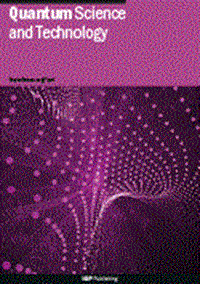防止半导体充电的硅基离子阱芯片
IF 5.6
2区 物理与天体物理
Q1 PHYSICS, MULTIDISCIPLINARY
引用次数: 0
摘要
硅基离子阱芯片可以受益于现有的先进制造技术,例如用于二维结构的多金属层技术和用于集成片上光学元件的硅光子学。然而,这些技术的可扩展性可能会受到半导体充电的影响,其中光产生的电荷载流子会产生破坏离子运动的电势。受半导体中电荷分布机制研究的启发,我们开发了一种硅基芯片,在所有暴露的硅表面涂上金。与没有这种金属屏蔽的芯片相比,这种修改显著地稳定了离子运动,这一结果强调了暴露的硅的有害影响。随着背景硅诱导场的减弱到可以忽略不计的水平,以前在非屏蔽芯片上不可行的量子操作,如边带冷却和双离子纠缠门,现在可以实现。本文章由计算机程序翻译,如有差异,请以英文原文为准。
A silicon-based ion trap chip protected from semiconductor charging
Silicon-based ion trap chips can benefit from existing advanced fabrication technologies, such as multi-metal layer techniques for two-dimensional architectures and silicon photonics for the integration of on-chip optical components. However, the scalability of these technologies may be compromised by semiconductor charging, where photogenerated charge carriers produce electric potentials that disrupt ion motion. Inspired by recent studies on charge distribution mechanisms in semiconductors, we developed a silicon-based chip with gold coated on all exposed silicon surfaces. This modification significantly stabilized ion motion compared to a chip without such metallic shielding, a result that underscores the detrimental effects of exposed silicon. With the mitigation of background silicon-induced fields to negligible levels, quantum operations such as sideband cooling and two-ion entangling gates, which were previously infeasible with the unshielded chip, can now be implemented.
求助全文
通过发布文献求助,成功后即可免费获取论文全文。
去求助
来源期刊

Quantum Science and Technology
Materials Science-Materials Science (miscellaneous)
CiteScore
11.20
自引率
3.00%
发文量
133
期刊介绍:
Driven by advances in technology and experimental capability, the last decade has seen the emergence of quantum technology: a new praxis for controlling the quantum world. It is now possible to engineer complex, multi-component systems that merge the once distinct fields of quantum optics and condensed matter physics.
Quantum Science and Technology is a new multidisciplinary, electronic-only journal, devoted to publishing research of the highest quality and impact covering theoretical and experimental advances in the fundamental science and application of all quantum-enabled technologies.
 求助内容:
求助内容: 应助结果提醒方式:
应助结果提醒方式:


